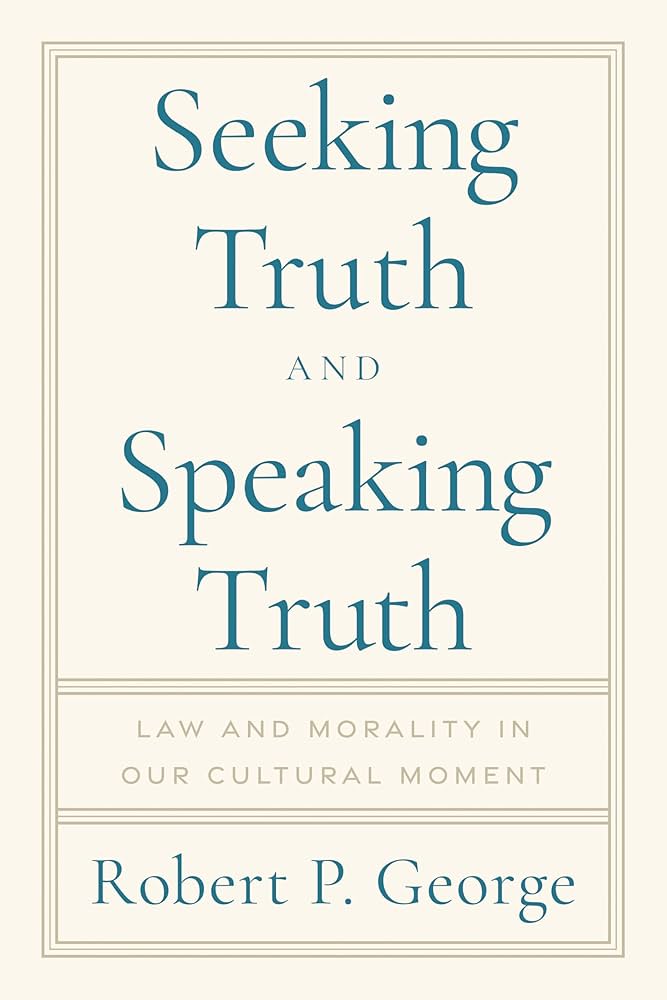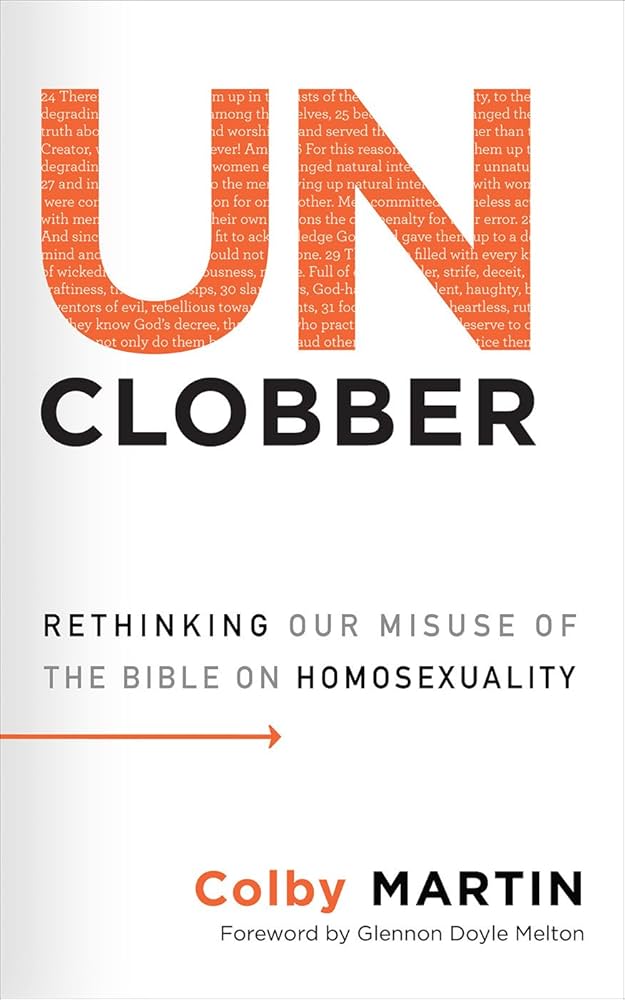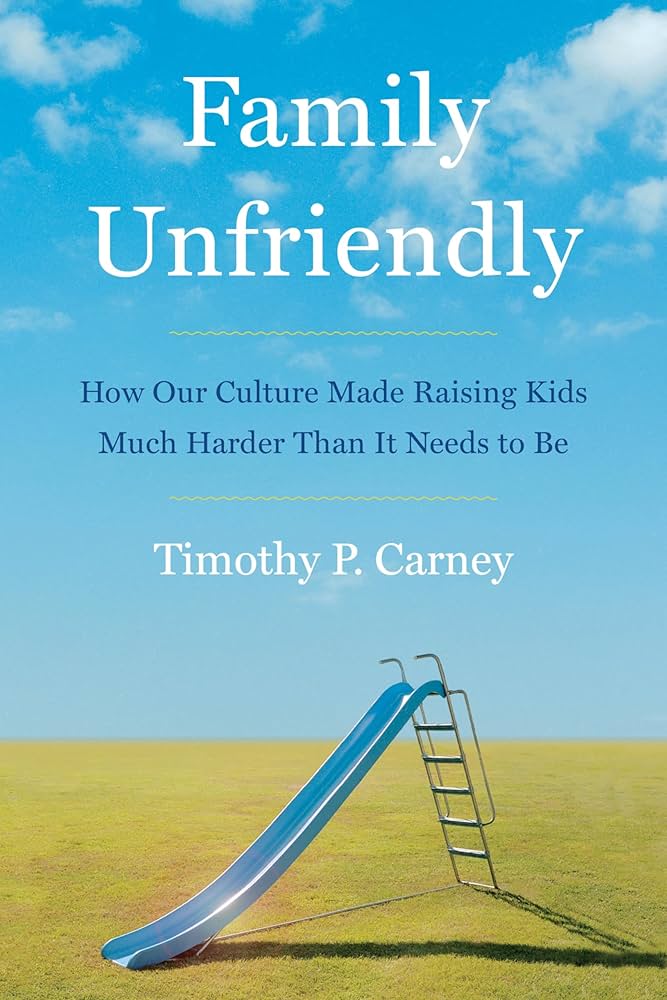In the last few years, the #MeToo movement, revelations of sexual abuse and cover-up within the Southern Baptist Convention, and controversy surrounding the appropriateness of women preaching in Lord’s Day worship have reopened discussions of gender within evangelicalism. While there has been little development within the evangelical church in the underlying theological and exegetical arguments regarding gender roles, there has been a significant shift in how these issues are understood within the broader culture. Ideologies once confined to the rarefied atmosphere of academia now fill the newsfeeds of social media users. For this reason, it’s crucial for Christians to understand these ideas, recognizing that conversations about gender don’t happen in a vacuum but are informed by cultural trends and popular discourse.
One example is the growing use of the term “intersectionality” in discussions about gender. In this article, we’ll attempt to present an accessible overview of intersectionality that aids the church in taking every thought captive for the glory of Christ (2 Cor. 10:5).
What Is Intersectionality?
Intersectionality has been explicated in a number of ways, including: an established theory,[1] an analytical societal paradigm,[2] a theoretical conceptual framework,[3] a public policy heuristic,[4] and a comprehensive research method.[5] Despite its complexity and multiple usages, we can offer the following definition: intersectionality is the claim that different facets of our identity interact in distinct and complex ways based upon the particular intersection of social categories we occupy, yielding a life and existence that can be generally characterized by either privilege, oppression, or both.
Critical race theorist and feminist scholar, Kimberlé Crenshaw, coined the term “intersectionality” in her analysis of how a black woman’s experience of discrimination cannot be characterized in terms of racism alone or sexism alone. Narrowly understood, the concept of intersectionality is a neutral tool that rightly recognizes that individual aspects of our identity are not held in isolation from one another but interact with one another. Such understanding helps us see why a “single mothers ministry” enables us to better meet the needs of single mothers than merely a “singles ministry” or “mothers ministry.”
However, the application of intersectionality that has captivated our national consciousness is less of a neutral tool and more of an ideological paradigm rooted in the larger enterprise of contemporary critical theory. Intersectionality is manifested in a number of critical social theories, with its most robust expression articulated in feminist theory. This understanding of intersectionality makes far broader claims, claims that attempt to establish strong connections between privilege, oppression, identity, and social existence. “Intersectionality recognizes that power, privilege, disadvantage, and discrimination are functions of interlocking spectrums of identity.”[6] “In feminist theory, intersectionality has become the predominant way of conceptualizing the relation between systems of oppression…it has become commonplace within feminist theory to claim that women’s lives are constructed by multiple, intersecting systems of oppression.”[7] To properly situate these claims, we turn next to contemporary critical theory, from which intersectionality emerged.
Intersectionality and Critical Theory
Briefly stated, critical theory is “a complex theoretical perspective…that explores the historical, cultural, and ideological lines of authority that underlie social conditions.”[8] Critical theory is a broad knowledge area which has developed significantly since its origins in the ideas of Karl Marx and the Frankfurt School. From its inception, “critical theory has been primarily concerned with the elimination of oppression and the promotion of justice,”[9] with contemporary iterations of critical theory being “more sensitive to modes of domination that involve race and gender and to the complexity of lived experience than in the Frankfurt School’s original articulation of the notion.”[10]
Critical theory today finds its expression in a number of critical social theories such as critical race theory, feminist theory, critical pedagogy, etc. These theories analyze society through the lens of power, problematizing the social conditions that create and reify it, challenging and disrupting those who have it, and emancipating and empowering those who don’t. “Critical social theories are those conceptual accounts of the social world that attempt to understand and explain the causes of structural domination and inequality in order to facilitate human emancipation and equity.”[11]
Critical scholarship unpacks the ways in which subordinate groups such as women, people of color, the poor, the differently-abled, and LGBTQ+ individuals are oppressed by dominant groups such as men, whites, the rich, the abled, and heterosexuals through hegemonic structures and ideas. “Intersectionality theory has revolutionized critical scholarship to determine overlapping forms of oppression, decenter hegemonic structures of power relations and social contexts, and enact a social justice agenda.”[12]
Given what we’ve covered, what are some ways in which critical theory and intersectionality influence biblical discussions of gender?
Potential Conflicts
Gender as a Social Construct
Increasingly, in our culture, gender is being positioned and heralded as a social construct. As such, gender is merely the product of the reigning beliefs, traditions, and ideas of a given people in a given society at a given time, untethered to either a transcendent God or biological reality established at conception. Fundamental to this effort is intersectionality and the hard claims it makes regarding identity and oppression: “Critical to the social construction of gender is acknowledgement of intersectionality of identities” with a view to “complicating constructions of gender” by “rejecting the traditional concept of viewing gender as a binary and provides new ways to think about gender.”[13]
While gender expression is culturally influenced (for good or ill), it is false to claim that gender is a social construct. Ironically, it is the claim that gender is a social construct that is the actual social construct, a social construct pushed by those who are opposed to the realities of male and female gender difference and the subsequent ontological and societal implications that follow. Under this paradigm, all things patriarchal (real or imagined) and all things that flow from and reify a heteronormative and cisgendered perspective are seen as oppressive, the abusive result of hegemonic power. This ideological commitment can be so pronounced that it leads to hostility not only to a biblical view of gender and gender roles, but to empirical, scientific evidence about biological sex differences.
Truth as Power
Following in the footsteps of poststructuralists like Michel Foucault and Jacques Derrida, contemporary critical theorists emphasize the ways in which truth claims can mask bids for power. This skepticism towards the neutrality or objectivity of truth claims will be a major obstacle to biblical discussions of gender. Rather than focusing on rational arguments, evidence, or exegesis of Scripture, those influenced by critical theory will attempt to “see through” truth claims to discern the hidden agendas and motivations of their interlocutor.
For example, if a man insists that gender is rooted in God’s creation of male and female and that men and women, though absolutely equal in intellect, value, and dignity, have some roles and responsibilities that are distinctive and not fully identical, he will be seen as protecting his own male interests. Yet if a woman makes the same claims, she will be seen as experiencing “internalized oppression,” because she has adopted the norms and values of the patriarchal society in which she is immersed and by which she is subjugated. In either case, their arguments can be ignored.
Here, Christians must gently insist that any idea or argument must be judged as true or false independent of the perceived motives of the one offering it.
Epistemology and the Role of Lived Experience
Intersectionality draws on standpoint theory’s contention that the “lived experience” of oppressor groups leads to unique cultural blindness, “a less complete view of the world,” and, alternatively, that the “lived experience” of oppressed groups leads to unique cultural understanding as they “not only understand their own experience, but also the experiences and knowledge of groups with more power.”[14]
Given this epistemic asymmetry, those sympathetic to this viewpoint often argue that dominant groups should defer to subordinate groups with regard to issues ostensibly related to oppression. Any challenge by the “oppressor” to the lived experience of oppressed people or to their beliefs regarding how oppression works in society can be seen as a mark of arrogance and privilege, an invalidation of the very humanity of the oppressed person, and an attempted reification of their oppressor status.
Once again, the exalted role of lived experience within contemporary critical theory will make biblical discussions of gender difficult. Not only does a biblical understanding of gender supposedly support the hegemonic structures of patriarchy and heteronormativity, it challenges the lived experience of women who “just know” that God has called them to be a pastor, or the lived experience of transgendered people who “just know” that their gender does not match their biological sex. While care and sensitivity should be prominent in these kinds of conversations, Christians must reaffirm Scripture as the ultimate authority. Our lived experience is not an infallible guide; Scripture is. Until we submit our lived experience (and the emotions that attend it) to the authority and wisdom of Scripture, our understanding will be incomplete and our way forward will be unclear (Ps. 119:105).
Gender and Justice
Critical and intersectional scholarship see an unbreakable connection between everything it labels as oppressive. Biological sex, race, class, and age are matters devoid of any intrinsic moral breach, while homosexuality and transgenderism are not. Yet to critical and intersectional epistemology, there are no moral distinctions among these categories; the only concern is that they are all part of an intersectional web of privilege and oppression.
Consequently, critical and intersectional scholars don’t divorce anti-racist activism from LGBTQ+ activism, or anti-poverty activism from pro-choice activism. All of these activities are considered legitimate and necessary forms of social justice praxis because they all represent efforts to overturn and dismantle systems of oppression: “Racism…Sexism…Ageism. Heterosexism. Elitism. Classism. It is a lifetime pursuit for each one of us to extract these distortions from our living.”[15]
Given this ideological commitment, a defense of biblical gender roles will not be seen merely as a misinterpretation of Scripture, but as a commitment to injustice on par with racism or anti-Semitism. Therefore, Christians must address the questions at the heart of this ideological impasse: what is “justice”? What is “oppression”? Is justice grounded in secular ideals for a human utopia or in God’s revealed will? Does “equality” refer to equality of value and dignity, or in the lack of any distinctions in roles? Should “oppression” be defined in terms of actual cruelty and violence? Or merely in terms of hegemonic power?
Individualism Versus Collectivism
 Finally, the greatest travesty of intersectionality is in the level of power it assigns to social categories in terms of privilege and oppression. Here it is significantly shortsighted and purblind. While it is true historically in our society black and brown people as a group, women as a group, and homosexuals as a group have faced pronounced, egregious oppression and disenfranchisement, it does not follow that oppressor qualities and characteristics are intrinsic to whites, men, and heterosexuals. Such a view is grossly unbiblical and defies fundamental ontological and anthropological realities regarding humankind. There are no immutable or permanent attributes assigned to these social categories along the vector of privilege and oppression. In this regard intersectionality fails to properly acknowledge and account for the fact and persistence of individualism as it relates to trials and difficulties in phenomenological experience and as it relates to the agency and opportunity afforded individuals in contemporary society. It also fails to account for changing conditions in society and the ebb and flow of how privilege and oppression are manifested, ascribed, and realized. We must understand and embrace that human beings are unique moral agents who cannot be reduced to their membership in any set of social groups. This reality disrupts the view of intersectionality vis-à-vis identity and its relationship to privilege and oppression. Most critically, intersectionality is wholly blind to the supernatural power and life-changing impact of what it means to be “born again” and consequently have one’s highest, most pervasive, all encompassing aspect of one’s identity be God himself, the living Christ (1 Pet. 1:3; Gal. 2:20; Phil. 3:7–9).
Finally, the greatest travesty of intersectionality is in the level of power it assigns to social categories in terms of privilege and oppression. Here it is significantly shortsighted and purblind. While it is true historically in our society black and brown people as a group, women as a group, and homosexuals as a group have faced pronounced, egregious oppression and disenfranchisement, it does not follow that oppressor qualities and characteristics are intrinsic to whites, men, and heterosexuals. Such a view is grossly unbiblical and defies fundamental ontological and anthropological realities regarding humankind. There are no immutable or permanent attributes assigned to these social categories along the vector of privilege and oppression. In this regard intersectionality fails to properly acknowledge and account for the fact and persistence of individualism as it relates to trials and difficulties in phenomenological experience and as it relates to the agency and opportunity afforded individuals in contemporary society. It also fails to account for changing conditions in society and the ebb and flow of how privilege and oppression are manifested, ascribed, and realized. We must understand and embrace that human beings are unique moral agents who cannot be reduced to their membership in any set of social groups. This reality disrupts the view of intersectionality vis-à-vis identity and its relationship to privilege and oppression. Most critically, intersectionality is wholly blind to the supernatural power and life-changing impact of what it means to be “born again” and consequently have one’s highest, most pervasive, all encompassing aspect of one’s identity be God himself, the living Christ (1 Pet. 1:3; Gal. 2:20; Phil. 3:7–9).
How to Respond
How should complementarians engage the challenges of critical theory and intersectionality?
First, reaching both non-Christians and Christians who have been influenced by these ideas will require that we have an accurate, charitable, and nuanced understanding of the issues involved.
Second, complementarians should be receptive to critique. Have we gone “beyond what is written” in our assessment of gender roles? To what extent do we have a secular vision of leadership as dominance rather than as service? To what extent have we minimized the absolute equality, worth, dignity, and abilities of women?
Third, we need to recognize the role that worldview assumptions play in people’s understanding of gender. It may not be fruitful to immediately engage in a detailed exegesis of Ephesians 5:22–33 if someone rejects the authority of Scripture. In the same way, we may need to excavate basic assumptions surrounding the nature of power, authority, epistemology, justice, and oppression. If someone presupposes that all distinctions based on gender are oppressive, then we need to start there with our engagement.
Finally, a complementarian church filled with loving marriages, gracious leaders, and divinely empowered men and women serving together as co-laborers for Christ and His kingdom (1 Pet. 2:9; Eph. 4:12) is a powerful witness against the flawed rubric of intersectional epistemology. As complementarians, we believe not only that gender distinctions and roles are God’s design, but that they are good gifts for humanity. Let us live out this truth, adorning the gospel with the testimony of our lives.
Dr. Pat Sawyer has a Ph.D. in Education and Cultural Studies from UNC-Greensboro, an M.A. in Communication Studies from UNC-Greensboro, and a B.A. in Psychology from UNC-Chapel Hill. He currently teaches at UNC-Greensboro, and can be found on Twitter at @RealPatSawyer.
Dr. Neil Shenvi has a Ph.D. in Theoretical Chemistry from UC-Berkeley and an A.B. in Chemistry from Princeton. He homeschools his four children through Classical Conversations and can be found on Twitter at @NeilShenvi.
Footnotes:
[1] Govind Dhaske, “The Complexity of Heuristic Structure of Gender Intersectionality and Statutory Political Participation for Women in India: Exploring Structural Challenges,” Intersectionalities: A Global Journal of Social Work Analysis, Research, Polity, and Practice, 6, no. 1 (2018): 37–49.
[2]April L. Few-Demo, Aine M. Humble, Melissa A. Curran, and Sally A. Lloyd, “Queer Theory, Intersectionality, and LGBT-Parent Families: Transformative Critical Pedagogy in Family Theory,” Journal of Family Theory & Review, 8, no. 1 (2016): 74–94.
[3] April L. Few-Demo, “Intersectionality as the ‘New’ Critical Approach in Feminist Family Studies: Evolving Racial/Ethnic Feminisms and Critical Race Theories,” Journal of Family Theory & Review, 6, no. 2 (2014): 169–183.
[4] Devon W. Carbado, Kimberle Williams Crenshaw, Vickie, M. Mays, and Barbara Tomlinson, “Intersectionality: Mapping the Movements of a Theory,” Du Bois Review: Social Science Research on Race, 10, no. 2 (2013): 303–312.
[5] Kathy Davis, “Intersectionality as Buzzword: A Sociology of Science Perspective on What Makes a Feminist Theory Successful,” Feminist Theory, 9, no. 1 (2008): 67–85.
[6] Angela Onwuachi-Willig, Jacob Willig-Onwuachi, “A House Divided,” in Critical Race Theory, eds. Richard Delgado and Jean Stefancic, (Philadelphia, PA: Temple University Press, 2013 ), 418.
[7] Anna Carastathis, “The Concept of Intersectionality in Feminist Theory,” Philosophy Compass, 9, no. 5 (2014): 304.
[8] Ozlem Sensoy and Robin DiAngelo, Is Everyone Really Equal (New York, NY: Teachers College Press, 2012), 1.
[9] Heather Davidson, Scot Evans, Cynthia Ganote, Jorie Henrickson, Lynette Jacobs-Priebe, Diana L. Jones, Isaac Prilleltensky, and Manuel Riemer, “Power and Action in Critical Theory Across Disciplines: Implications for Critical Community Psychology,” American Journal of Community Psychology 38, no. 1–2 (2006): 36.
[10] Shirley Steinberg and Joe Kincheloe, “Power, Emancipation, and Complexity: Employing Critical Theory,” Power and Education 2, no. 2 (2010): 140.
[11] Bradley A. U. Levinson, “Exploring Critical Social Theories and Education,” in Beyond Critique, ed. Bradley A.U. Levinson (Boulder, CO: Paradigm Publishers, 2011), 2.
[12] Christian Chan and Adrienne Erby, “A Critical Analysis and Applied Intersectionality Framework with Intercultural Queer Couples,” Journal of Homosexuality 65, no. 2 (2017): 36.
[13] Pamela Eddy, “Looking Forward – Strategies for Inclusivity,” New Directions for Community Colleges, 179 (2017): 104.
[14] Kate Lockwood Harris, “Re-situating organizational knowledge: Violence, intersectionality and the privilege of partial perspective,” Human Relations, 70, no. 3 (2017): 264.
[15] Audre Lorde, “Age, Race, Class, and Sex: Women Redefining Difference,” in Race, Class, and Gender: An Anthology, eds. Margaret L. Andersen and Patricia Hill Collins (Belmont, CA: Wadsworth Publishing Company, 1992), 496.
Share This Article


